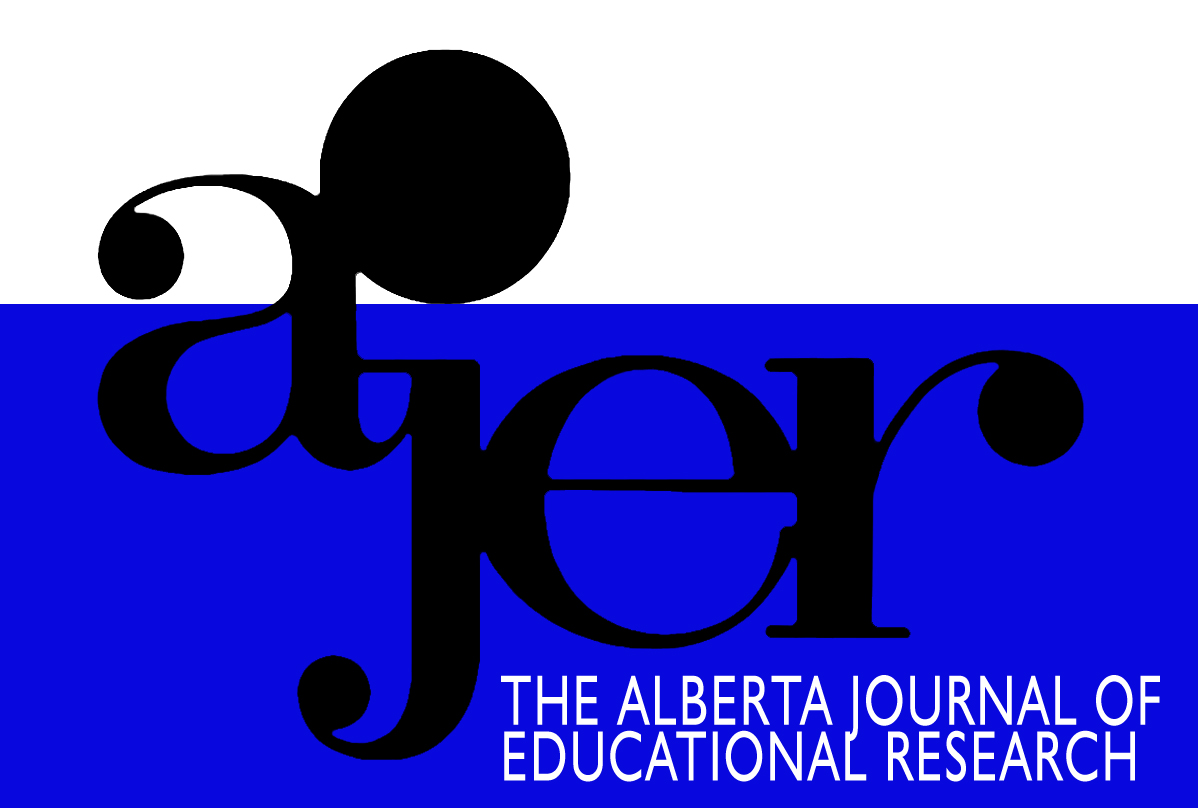The Gender Paradox in School Mathematics
DOI:
https://doi.org/10.55016/ojs/ajer.v62i4.56201Keywords:
Keywords, gender, mathematics achievement, program access, logistic regression model, Mots clés, sexe, rendement en mathématiques, accès aux programmes, modèle de régression logistiqueAbstract
Current quantitative gender and mathematics research exists as separate ability and postsecondary access studies, each drawing different conclusions. But if gender, achievement and enrollment (measurable proxies) are modeled together it will be possible to investigate possible associations. Using 106,473 standardized Grades 3, 6 and 9 Ontario student test responses from a single cohort, likelihood of enrolling in Grade 9 academic mathematics was modeled against elementary achievement and gender in a binary response model. Males achieved higher, (0.028≤d≤0.118), and occupied both achievement extremes in greater numbers, (1.04≤VR≤1.10), while females were 1.5 times more likely to enroll in academic courses. These paradoxical results are discussed in relation to the utility of achievement and enrollment as research metrics in gender and mathematics research.
La recherche quantitative actuelle sur la différence en mathématiques entre les filles et les garçons se déroule sur deux plans distincts, un portant sur les habiletés et l’autre sur l’accès aux études secondaires, et les deux arrivent à des conclusions différentes. En modélisant ensemble le sexe, le rendement et les inscriptions (passerelles mesurables), il est possible d’étudier des associations possibles. Puisant dans 106 473 réponses aux examens normalisés d’une seule cohorte d’élèves en 3e, 6e et 9e années en Ontario, nous avons modelé, dans un modèle de réponse binaire, la probabilité de s’inscrire à des cours de mathématiques théoriques en 9e année en relation avec le sexe et le rendement à l’école élémentaire. Le rendement des garçons était supérieur (0.028≤d≤0.118) et leurs réponses se situaient aux deux pôles de rendement plus souvent (1.04≤VR≤1.10), alors que les filles s’inscrivaient aux cours académiques 1,5 fois plus souvent que les garçons. Nous discutons de ces résultats paradoxaux par rapport à l’utilité du rendement et de l’inscription comme mesures dans la recherche portant sur la différence en mathématiques entre les filles et les garçons.
Downloads
Published
Issue
Section
License
UNIVERSITY OF ALBERTA COPYRIGHT LICENSE AND PUBLICATION AGREEMENT
If accepted, authors will be asked to sign a copyright agreement with the following points:
A. Where there is any inconsistency between this Copyright License and Publication Agreement and any other document or agreement in relation to the same subject matter, the terms of this Agreement shall govern.
B. This document sets out the rights you are granting in relation to publication of your article, book review, or research note entitled (the “Article”) through inclusion in the academic journal titled Alberta Journal of Educational Research (the “Journal”) published through the Faculty of Education, representing the Governors of the University of Alberta (the “Journal Editor”).
C. There will be no payment to you for this publication and grant of rights. In consideration of the agreement to publish the Article in the Journal:
1. You are warranting that:
- the content of the Article is your original work, and its content does not contain any material infringing the copyright of others; or, where the Article is not entirely your original work, you have obtained all necessary permissions in writing to grant the rights you are giving in this agreement;
- the content of the Article does not contain any material that is defamatory of, or violates the privacy rights of, or discloses the confidential information of, any other person;
- the Article has not been published elsewhere in whole or in part, and you will not allow publication of the Article elsewhere without the consent of the Journal Editor;
- the names of all co-authors and contributors to the Article are:
2. You agree to license the copyright in the Article to the Journal Editor, on a worldwide, perpetual, royalty free basis; and to the extent required by the terms of this agreement. You shall retain the right at all times to be acknowledged as the/an author of the Article.
3. You further agree that the Journal Editor has the entitlement to deal with the Article as the Journal Editor sees fit, and including in the following manner;
- The right to print, publish, market, communicate and distribute the Article and the Journal, in this and any subsequent editions, in all media (including electronic media), in all languages, and in all territories, ing the full term of copyright, and including any form of the Article separated from the Journal, such as in a database, abstract, offprint, translation or otherwise, and to authorize third parties to do so;
- The right to register copyright of the Journal;
- The right to edit the Article, to conform to editorial policy as the Journal Editor sees fit.
4. If any co-author or contributor to the Article does not sign this agreement, the Journal Editor reserves the right to refuse to publish the Article.



